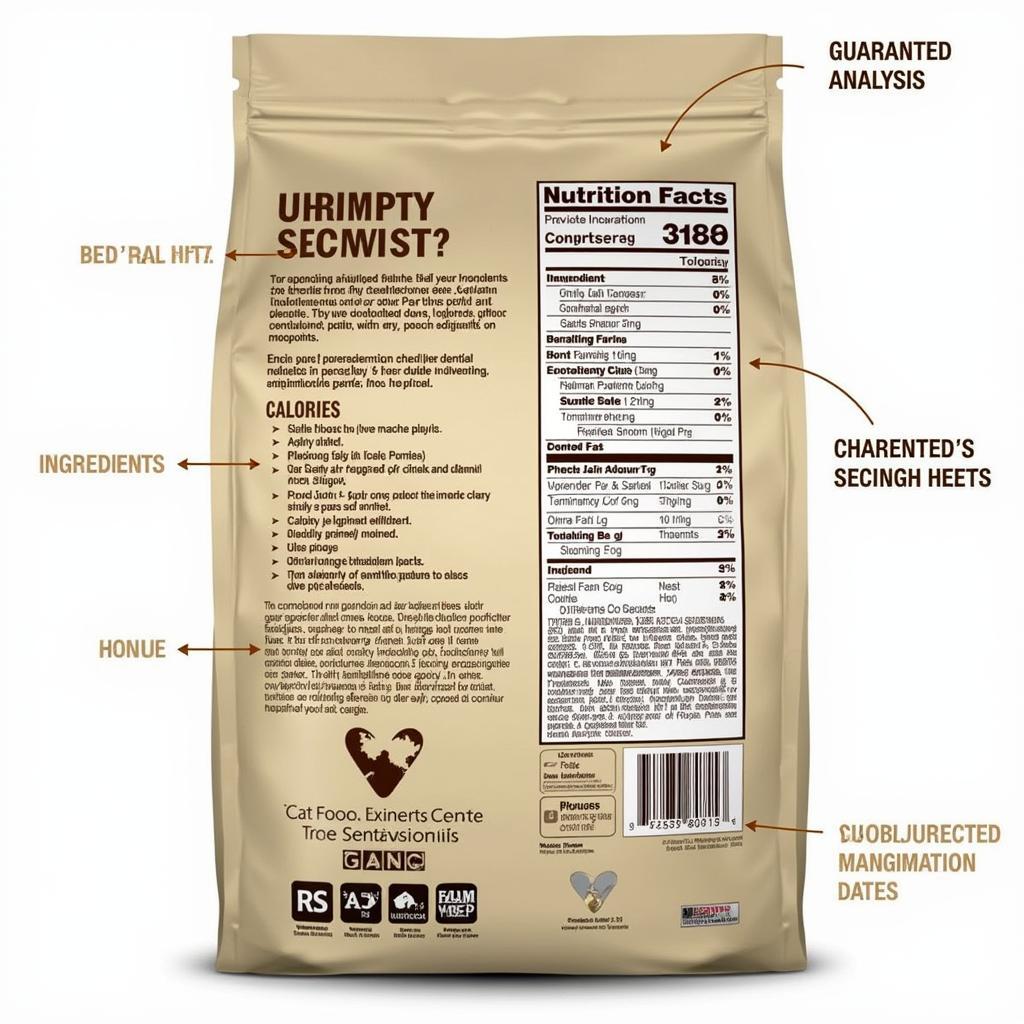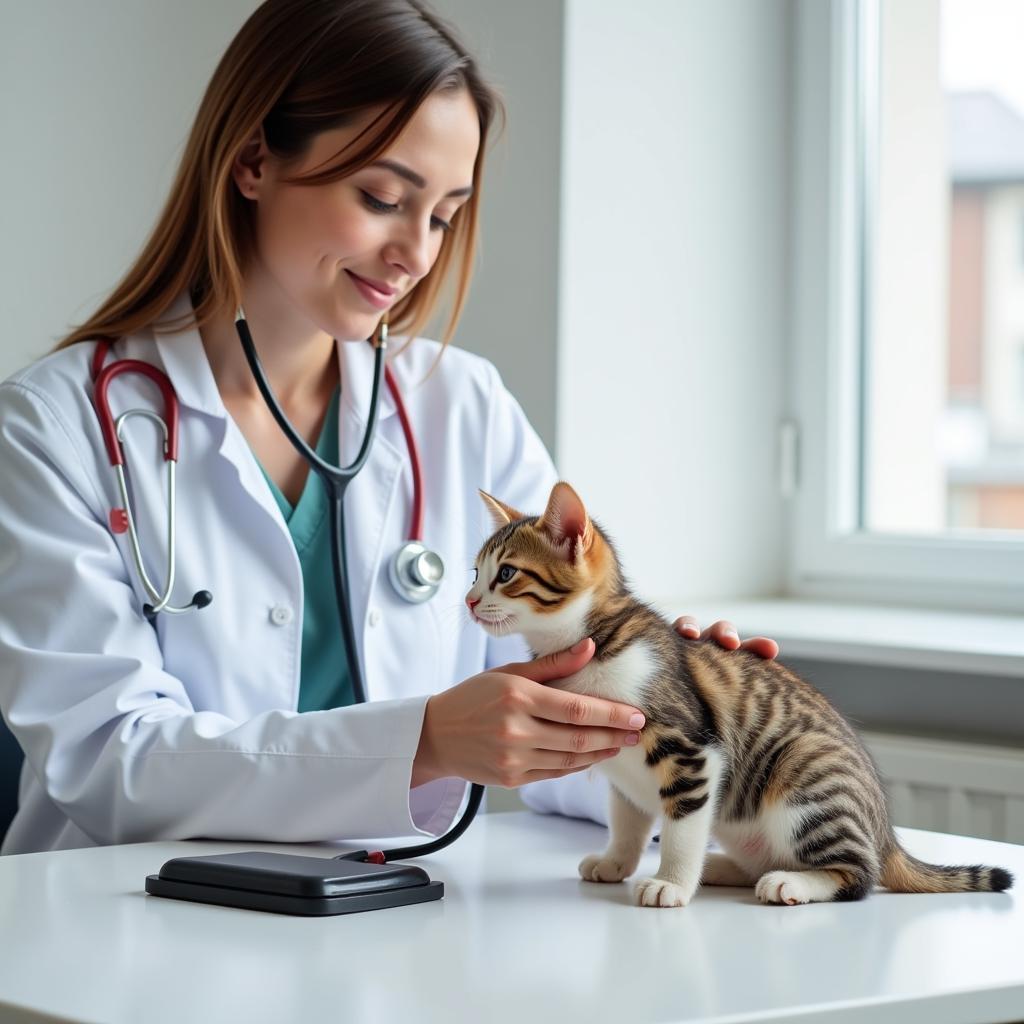Navigating the world of pet food can feel overwhelming, especially when it comes to finding the perfect Junior Cat Food. Your kitten’s nutritional needs during this crucial growth stage differ significantly from those of adult cats. Making informed choices now sets the foundation for a long, healthy life for your feline friend.
Understanding the Nutritional Needs of Junior Cats
Kittens grow rapidly during their first year of life, requiring a higher calorie intake and a different balance of nutrients compared to adult cats. Here’s what to prioritize:
- Protein: Essential for muscle development and overall growth. Look for high-quality animal-based protein sources like chicken, fish, or turkey as the primary ingredients.
- Fat: Provides concentrated energy for playful kittens and supports brain and vision development.
- DHA: An omega-3 fatty acid crucial for brain and eye development, particularly during the first few months.
- Calcium and Phosphorus: Vital for strong bones and teeth. The ratio of these minerals is important for proper absorption.
- Taurine: An essential amino acid that cats cannot produce themselves. Taurine deficiency can lead to heart problems, blindness, and reproductive issues.
Deciphering Cat Food Labels: What to Look For
Don’t be intimidated by the jargon on cat food labels! Understanding key terms helps you make the right decision for your kitten:
- “Complete and Balanced”: This statement indicates that the food meets the nutritional requirements established by the Association of American Feed Control Officials (AAFCO) for the specific life stage, in this case, growth.
- Ingredient List: Ingredients are listed in descending order of weight. Look for named meat or fish as the first ingredient. Avoid by-products, artificial colors, flavors, and preservatives.
- Guaranteed Analysis: This section lists the minimum percentages of protein, fat, fiber, and moisture.
- Life Stage: Ensure the label clearly states “kitten” or “junior” to guarantee age-appropriate nutrition.
 Close-up of a cat food bag highlighting the nutritional information panel
Close-up of a cat food bag highlighting the nutritional information panel
Types of Junior Cat Food
You’ll encounter various types of junior cat food, each with its pros and cons:
- Dry Kibble: Affordable, convenient, and promotes dental health due to its crunchy texture.
- Wet Food: Higher in moisture content, which is beneficial for urinary health. Many kittens find wet food more palatable.
- Semi-Moist Food: Falls between dry and wet food in terms of texture and moisture. However, it often contains higher sugar content, which isn’t ideal.
The best choice depends on your kitten’s preference and your lifestyle. Some owners opt for a combination of wet and dry food to provide variety.
How Much to Feed Your Growing Kitten
Kittens have smaller stomachs and higher energy needs, so they require frequent meals throughout the day. Here’s a general guideline:
- 6-12 weeks: Feed your kitten four small meals per day.
- 3-6 months: Transition to three meals per day.
- 6-12 months: Two meals per day are usually sufficient.
Always follow the feeding guidelines on your chosen cat food packaging and consult with your veterinarian to determine the appropriate amount for your kitten’s breed, age, and activity level.
 A veterinarian carefully examining a kitten during a check-up
A veterinarian carefully examining a kitten during a check-up
Making the Transition to Adult Food
As your kitten approaches adulthood (around one year of age), it’s time to transition them to adult cat food gradually. Sudden changes in diet can upset their stomach. Here’s how to make the switch smoothly:
- Gradual Introduction: Mix a small amount of adult food with their usual kitten food, gradually increasing the ratio over 7-10 days.
- Monitor for Digestive Issues: Watch for any signs of digestive upset, such as vomiting, diarrhea, or loss of appetite. If you notice any issues, slow down the transition process.
Frequently Asked Questions About Junior Cat Food
Q: Can I give my kitten milk?
A: While kittens thrive on their mother’s milk, cow’s milk can cause digestive upset in some cats. It’s best to stick to specially formulated kitten milk replacers if needed.
Q: When should I switch my kitten to adult food?
A: Most cats are considered adults at one year of age. However, consult with your veterinarian for breed-specific advice.
Q: My kitten is a picky eater. What should I do?
A: Try warming up wet food slightly or adding a small amount of warm water to dry kibble to enhance the aroma. Experiment with different flavors and textures to find what your kitten prefers.
Need More Help?
Choosing the right junior cat food is a significant step in ensuring your furry friend’s well-being. If you have any questions or need further assistance, don’t hesitate to contact our dedicated team at Mina Cones Food. Call us at 02437655121, email us at [email protected], or visit our location at 3PGH+8R9, ĐT70A, thôn Trung, Bắc Từ Liêm, Hà Nội, Việt Nam. Our customer care team is available 24/7 to provide guidance and support.